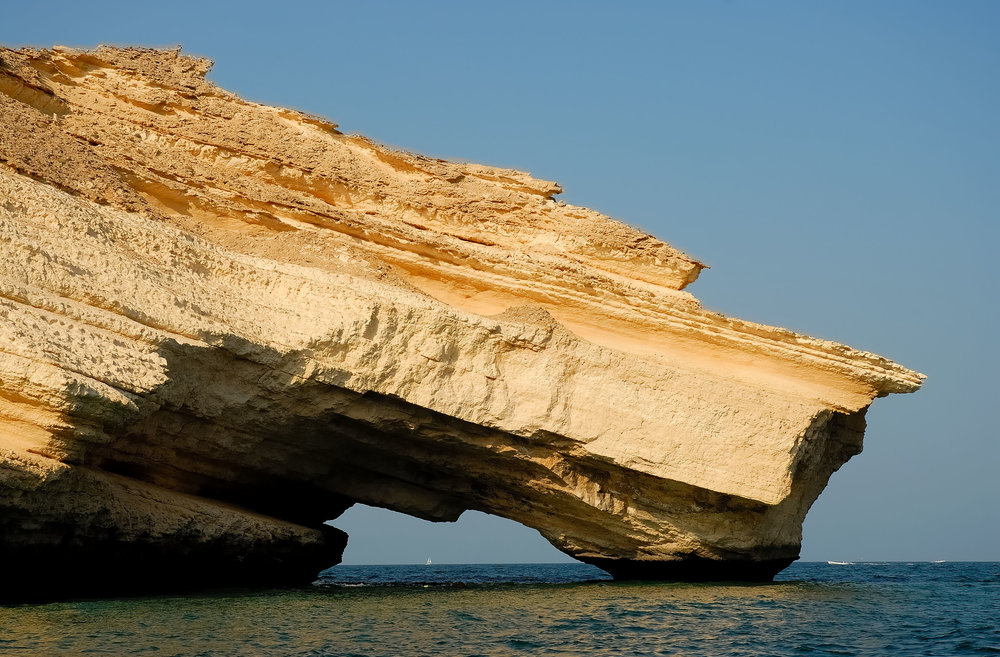
In 2006 I was living and working in Qatar. Coming towards the end of the year we thought that it would be nice to see some other country in the region. I had already met some people from Oman through my work and found them to be warm and friendly. Also, many of my Qatari workmates had gone to Oman on their holidays and we were also aware of the natural beauty of the country. We arranged a four-day break in Oman and we were not disappointed with our choice for a first trip.
Oman is quite different to the Gulf States and it has closer ties to both Africa and East Asia than most countries in the region. At one stage Omani influence extended as far away as Zanzibar where the Sultan had a palace. At a later stage, they were invaded by the Persians, who were driven out in the 18th century when the Al Said dynasty came to power and, in effect, modern Oman has developed from there.
One of the first things that we noticed was the complete absence of high-rise buildings, compared with other Gulf countries, in the capital Muscat where we were staying.
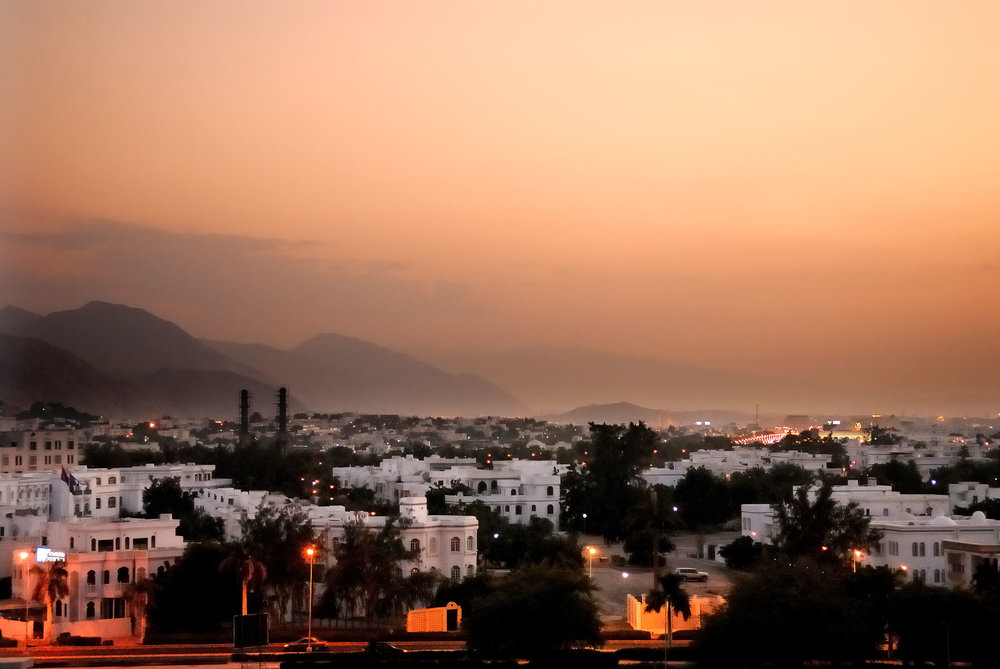
This is down to a deliberate policy of the current ruler Sultan Qaboos bin Said al Said who has reigned since 1970. Like other Gulf rulers, Sultan Qaboos was educated in Sandhurst and he served in the British Army, including a spell of service in Germany, when he was a young man.
On our second day in Oman, we went on a trip into the interior to see the mountains. Our car pulled into a service station to fill up for the journey and two young Omani men, who saw me with a camera, asked me to take their photo and I duly obliged.
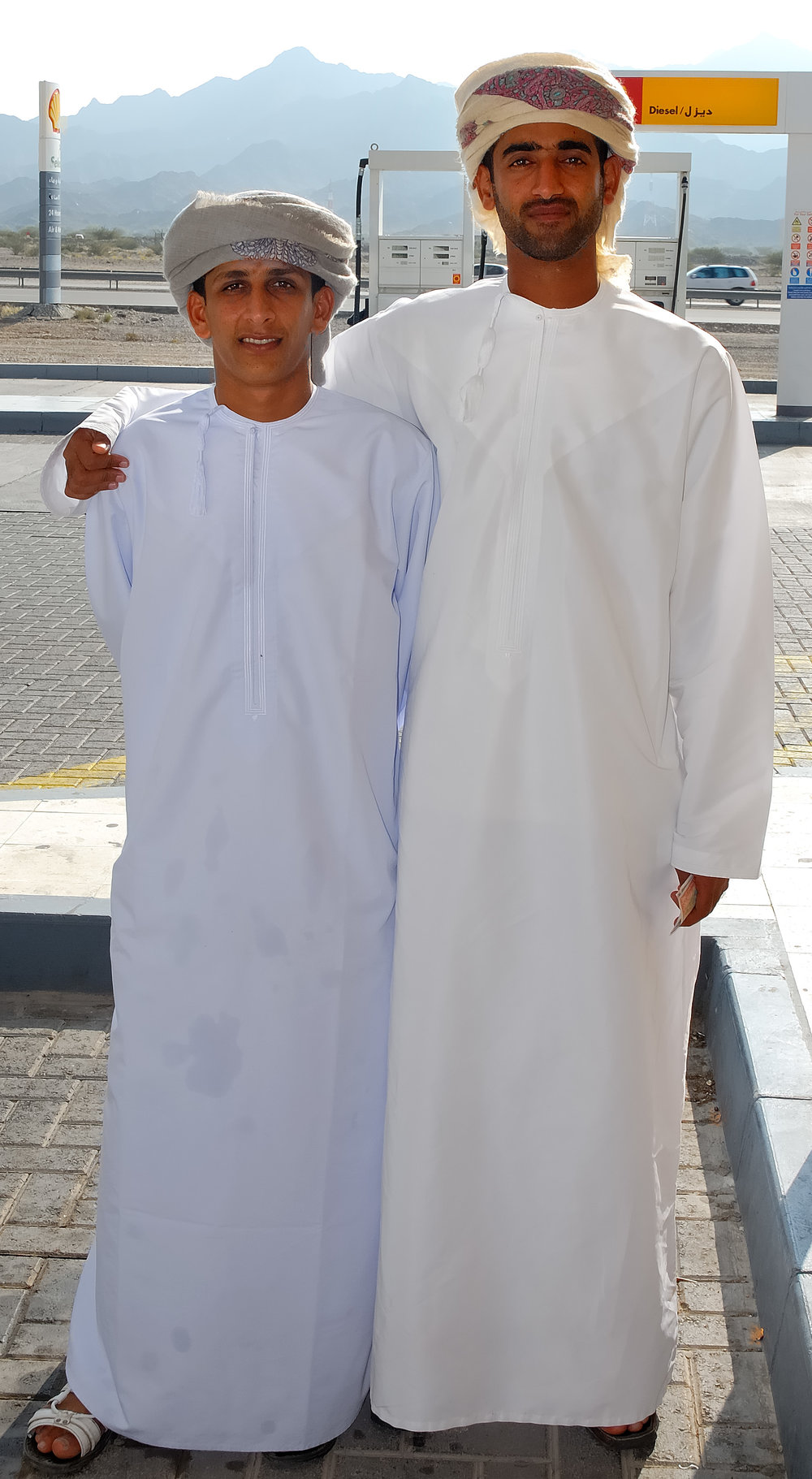
When I had taken the photo they just looked at it on the back of the camera and then went on their way.
The first place we visited on our journey was the town of Nizwa where we visited a market and the local fort. Our driver Essa (can also be Isa or Issa – pronounced ‘Ee-sah’ which means ‘Jesus’, the same as Iosa, pronounced more or less the same way, in the Irish language) was familiar with Nizwa and brought us around the market and the fort.
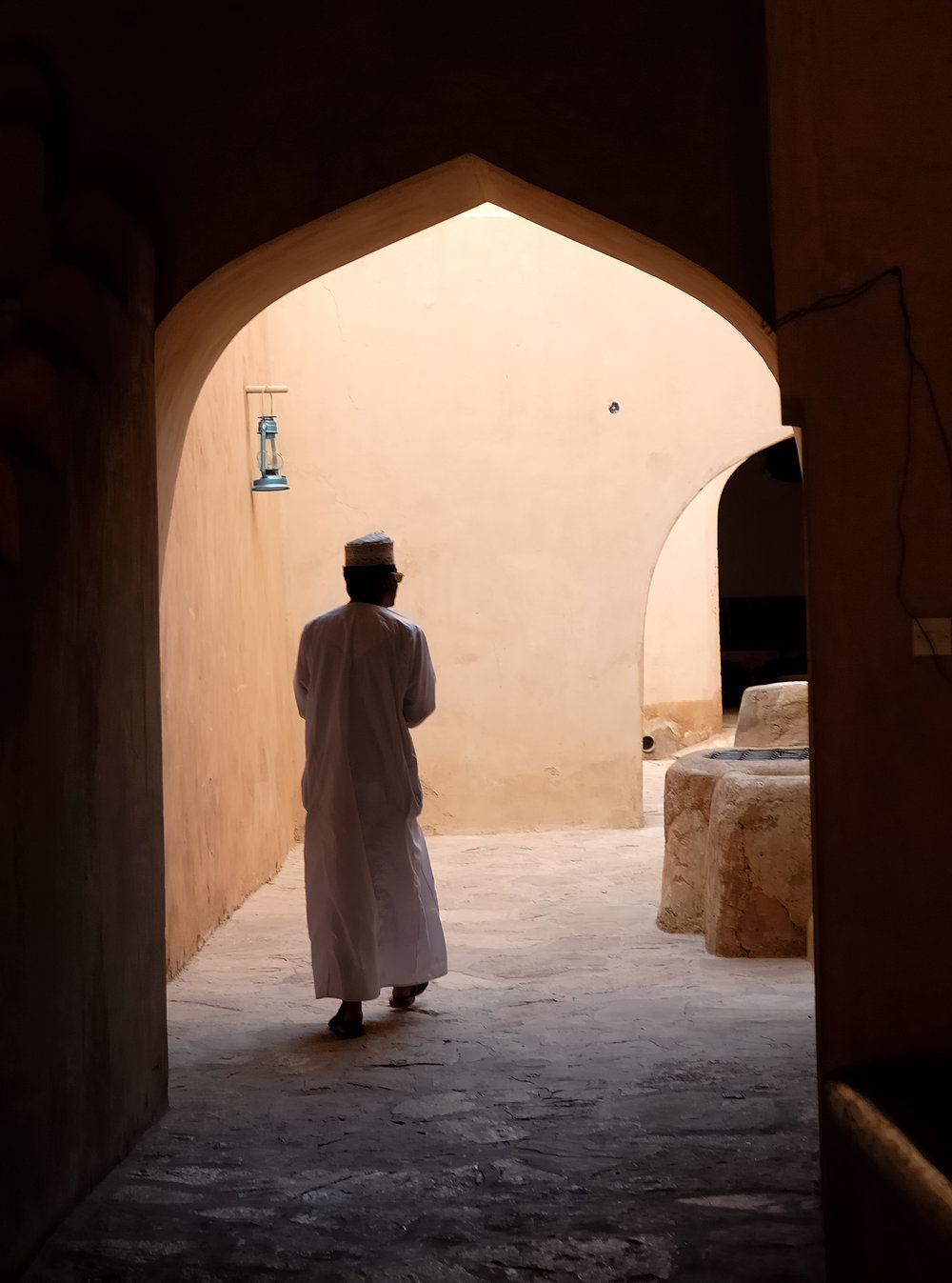
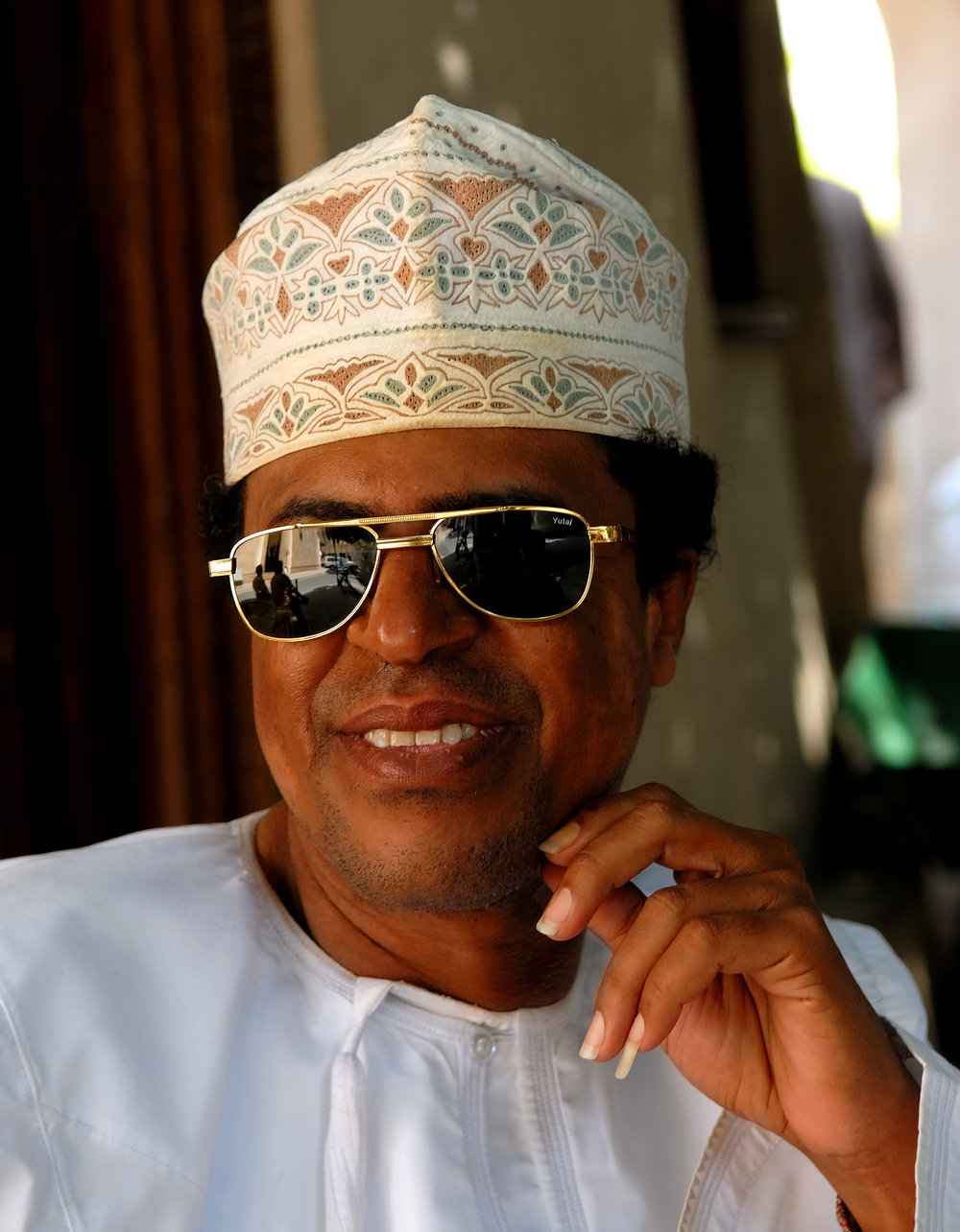
By the length of his nails in the second photo above Essa could be a left-handed player of the Arabian Oud, which was a precursor of the European lute.
Below is a mosque beside the fort in Nizwa and a ‘majlis ‘ or sitting down ( for discussions) room.
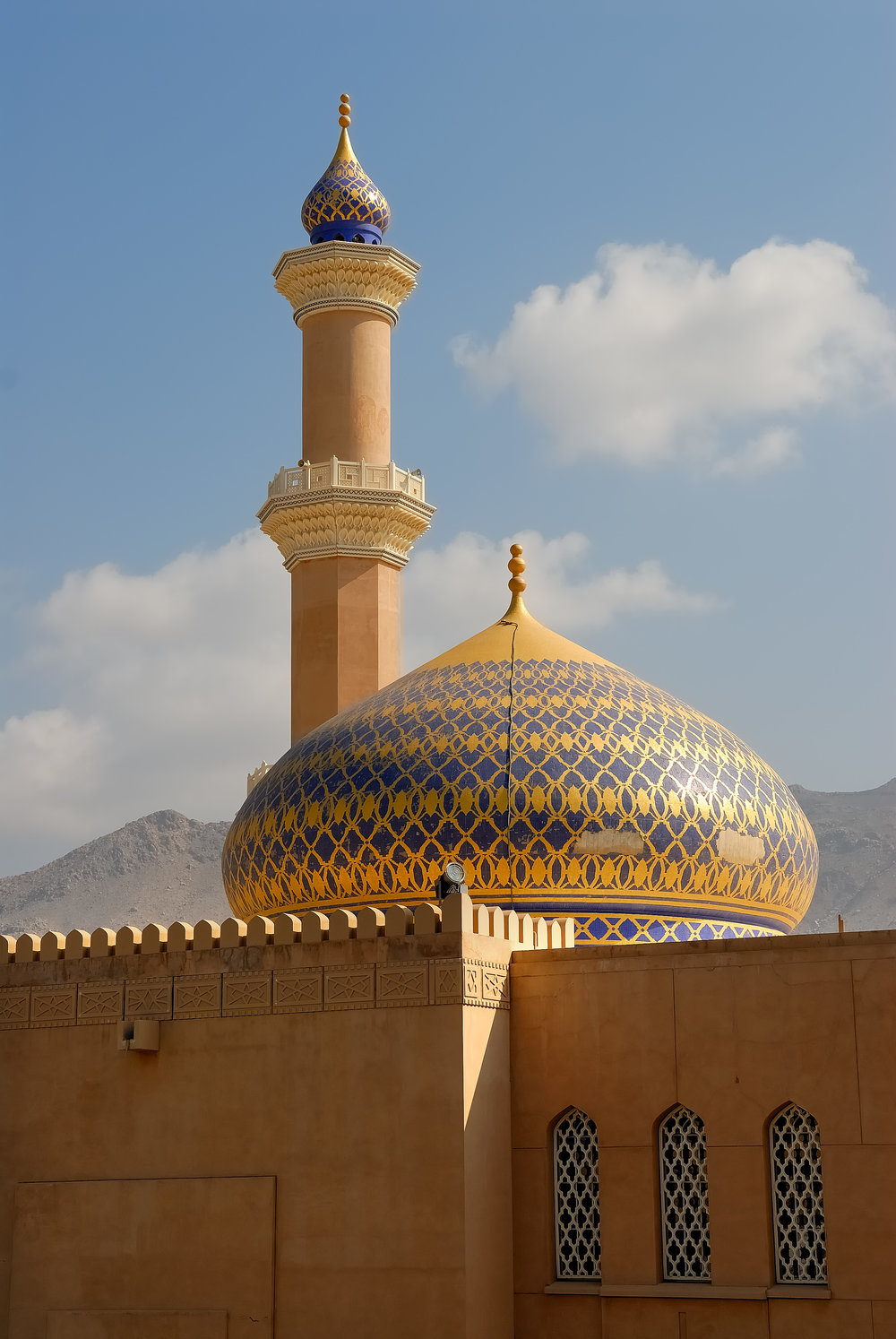
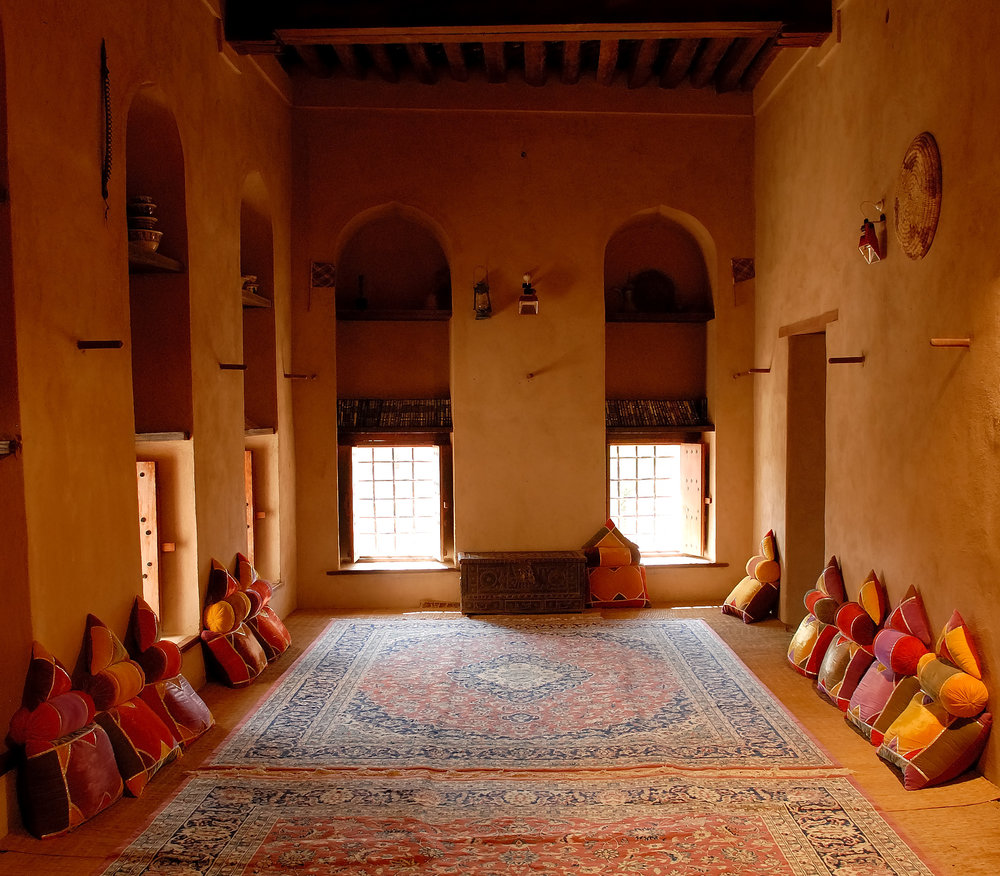
The majlis, unlike its counterparts in Qatar, seemed to require some sitting on the floor, which may have rather shortened discussions unless more cushions were used.
We then proceeded into the majestic Hajar Mountains where we came across a village with 1,000 year old houses that were now deserted as the local river had run dry.
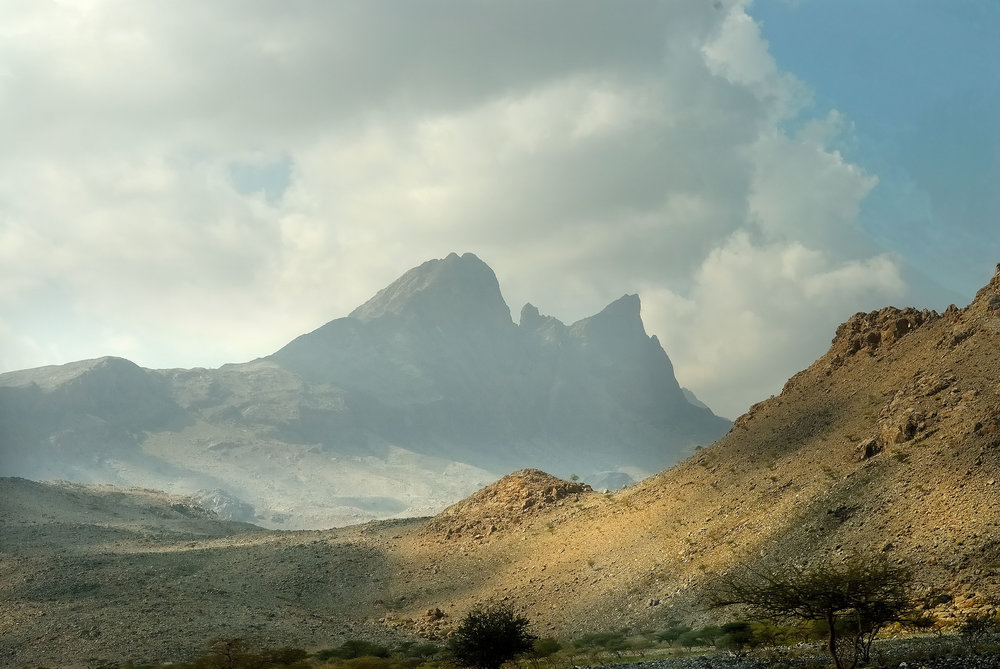
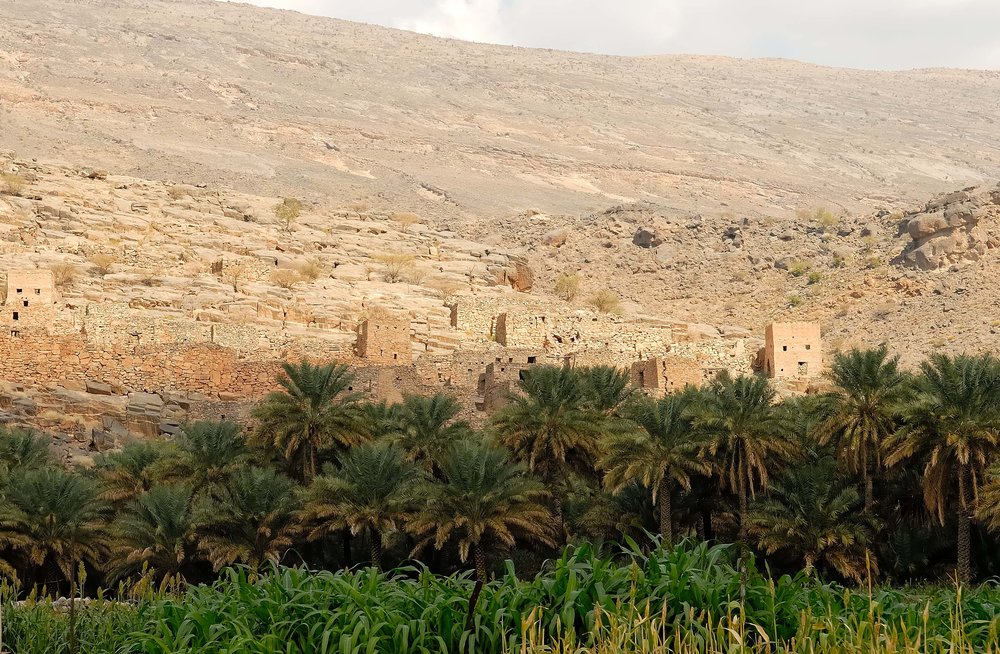
These houses were near the entrance to Wadi Ghul. Essa said that Wadi Ghul meant the ‘Wadi of the Snake’, but the best translation of Ghul is ‘ghoul’ and it was probably the ‘origin word’ for that name in English. Perhaps Essa was getting ‘ghoul’ mixed up with ‘devil’, hence the reference to ‘snake’.
We then went to the top of an almost 10,000-foot high mountain by road. This mountain is called Jebel Shams which means the Mountain of the Sun, but at this altitude it was quite cold at the top despite the ‘sunny’ name.
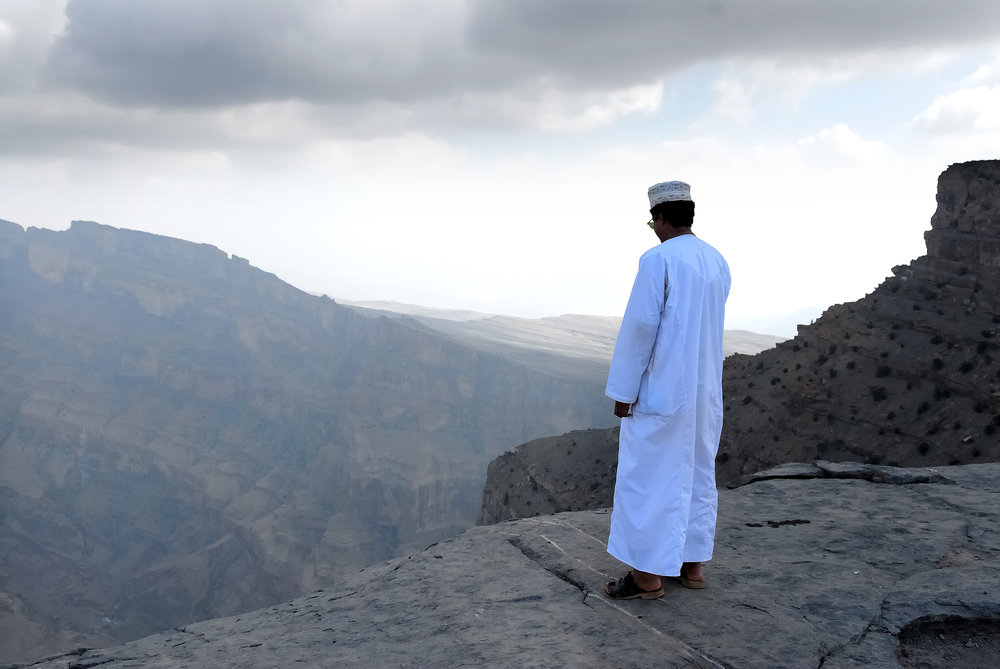
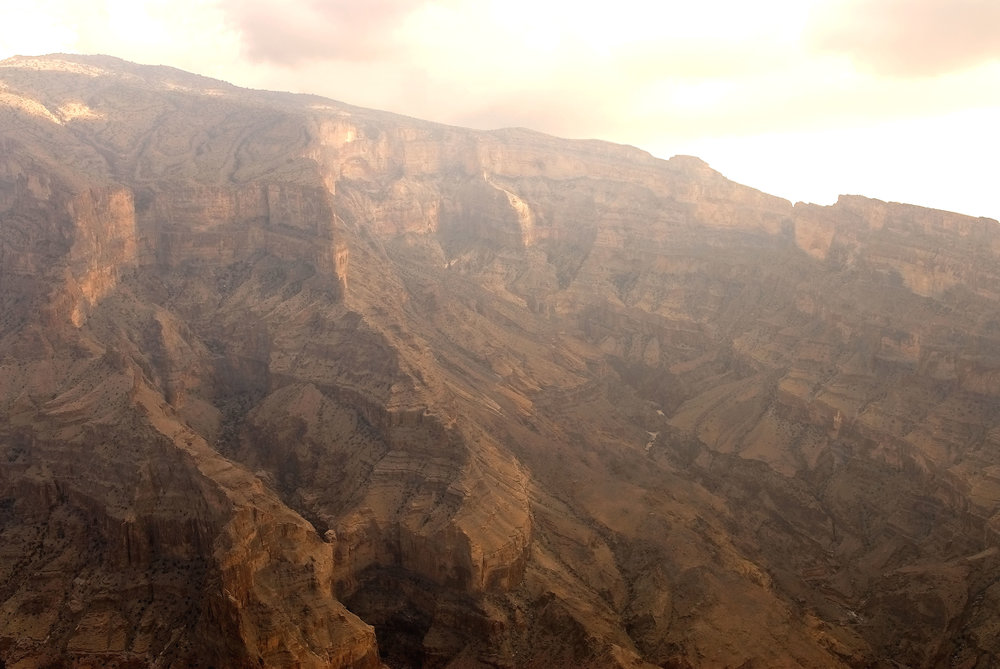
In the first photo on the left above Essa appears to be looking into an abyss, but when he called me forward I saw the scene on the right above, which is often referred to as the ‘Grand Canyon of Oman’
We returned to Muscat via Nizwa where we saw this wonderful ‘book roundabout’. This really took our fancy as we were already familiar with ‘themed’ roundabouts from Doha such as Sports Roundabout, Television Roundabout (for Al Jazeera) and Oryx Roundabout.
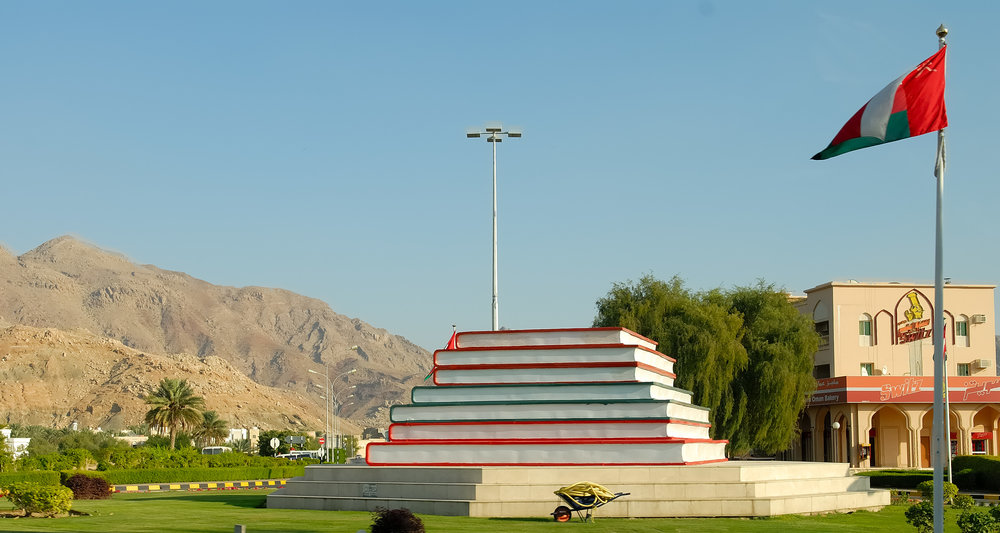
On the next day, we decided to go to see the Gulf of Oman and we set out on a boat trip from Bandar Al Rowdha.
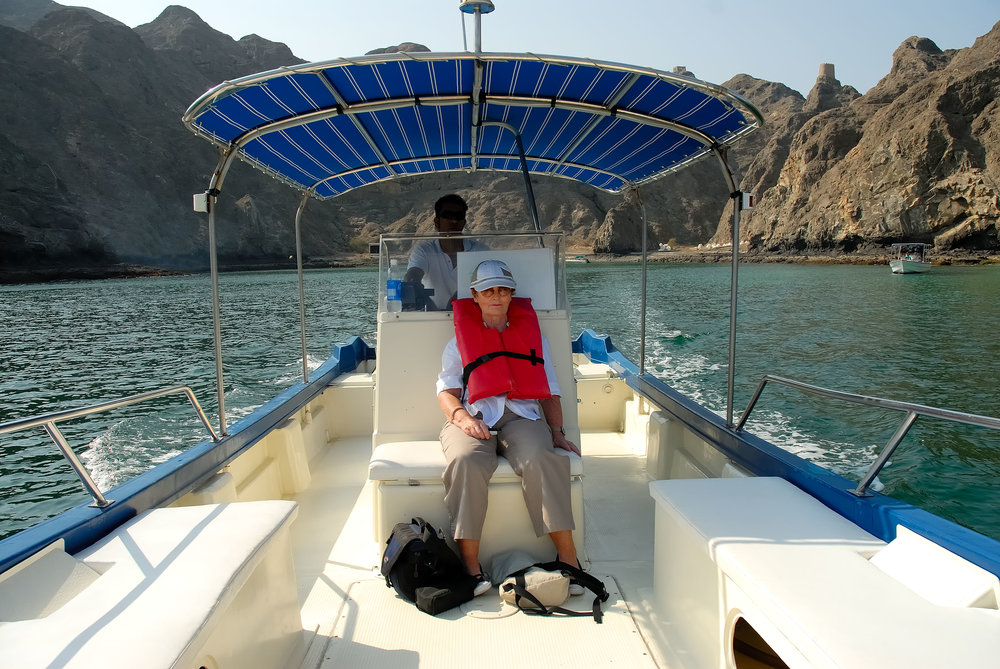
Our boat was a fast, flat-bottomed vessel and we both wore life jackets. I was able to move around to get photos when the boat was moving slowly or straight ahead, but not while it was ‘taking corners’.
There were plenty of other boats about, but we seemed to be the only ones wearing life jackets
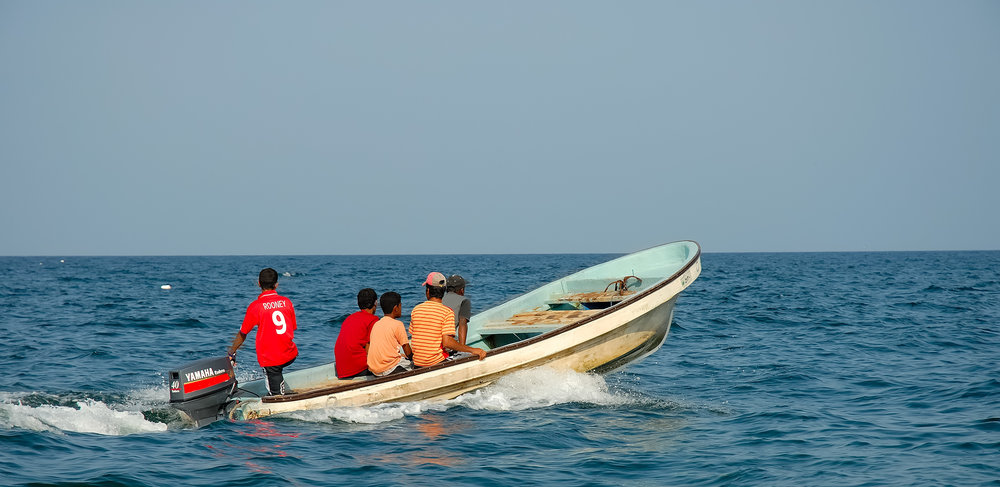
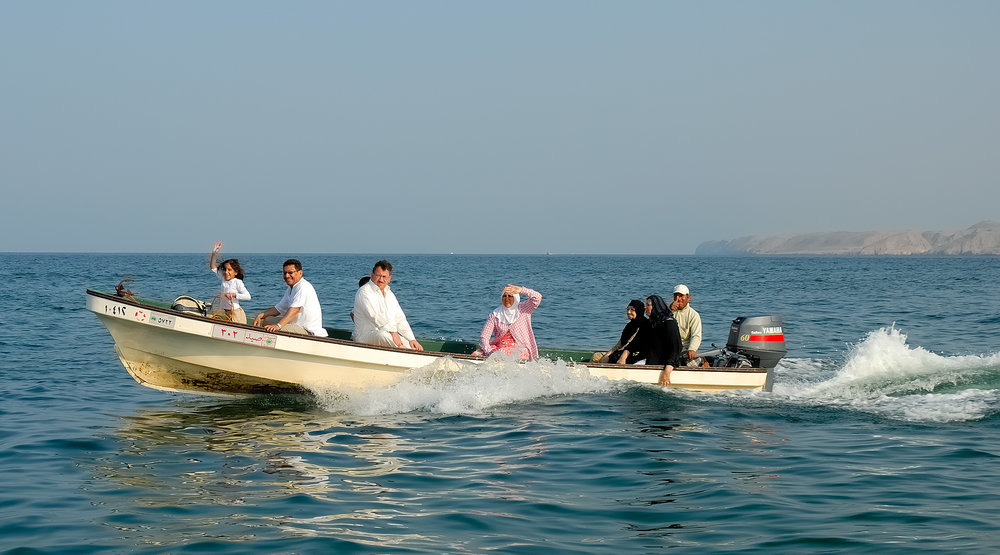
The Wayne Rooney jersey in the photo on the left above is not surprising as the Premier League was available on Al Jazeera Sports and other local TV channels, with a choice of Arabic and English commentary. Sir Alex Ferguson and his team were, at that time, frequent visitors to Doha and other Gulf capitals for exhibition matches and even for training. The photo on the right above again shows how friendly Omani people can be.
The coast of Oman must be heaven for geologists who can see all the different layers of rock development set out before their eyes.
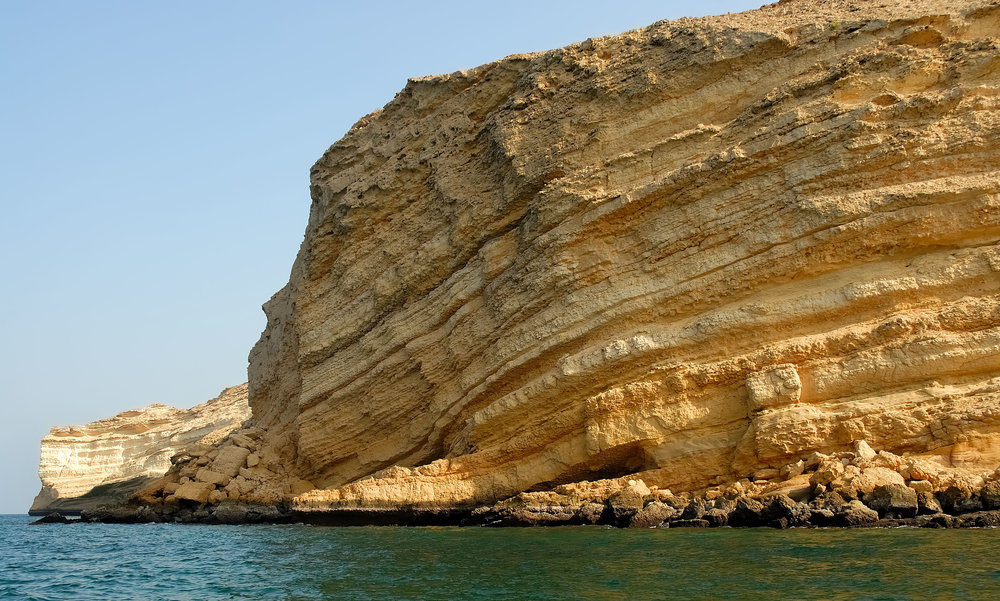

I believe we may have gone under the arch in the photo on the right above, but I don’t seem to have a photo of that at this stage.
Before we finished, we went past the beach attached to the Al Bustan Palace luxury hotel. I normally don’t have much time for such beaches, but the hills behind were something to behold.
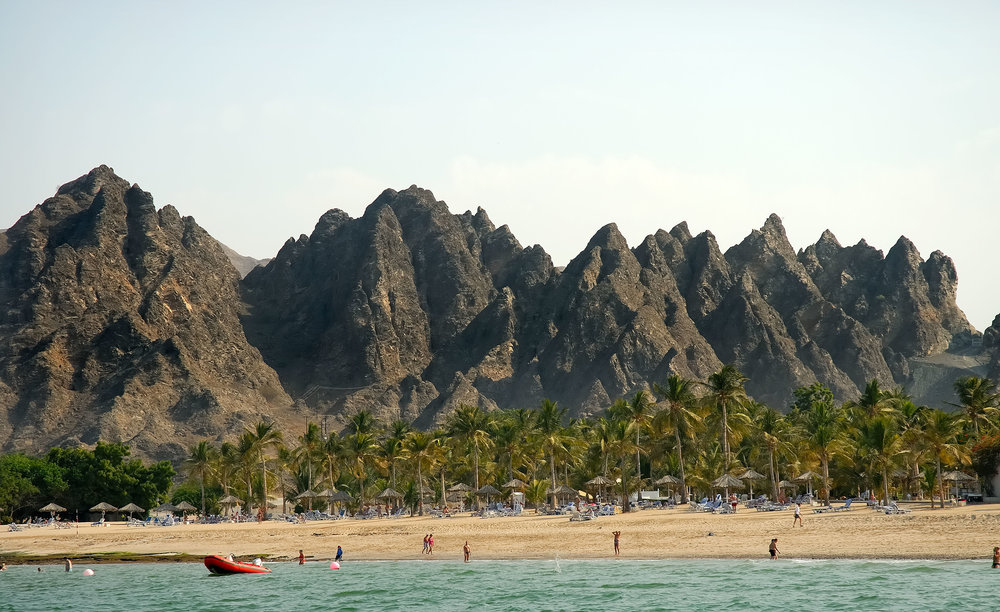
Finally, before we returned to land, we went on a trip around the harbour of Old Muscat where the Sultan’s Palace is located. This port had many forts, including this one on an island near the entrance to the port.

I have never been able to discover what the references to ‘Irish’ and ‘Cork’ on the walls of the fort meant, but they certainly intrigued me.
On our last night in Oman, we went to the souq in the port of Muttrah. It was pretty much like many other souqs in the region with the usual exotic foods, silks and perfumes etc. The most intriguing and distinctive feature was the circular area shown on the right below.
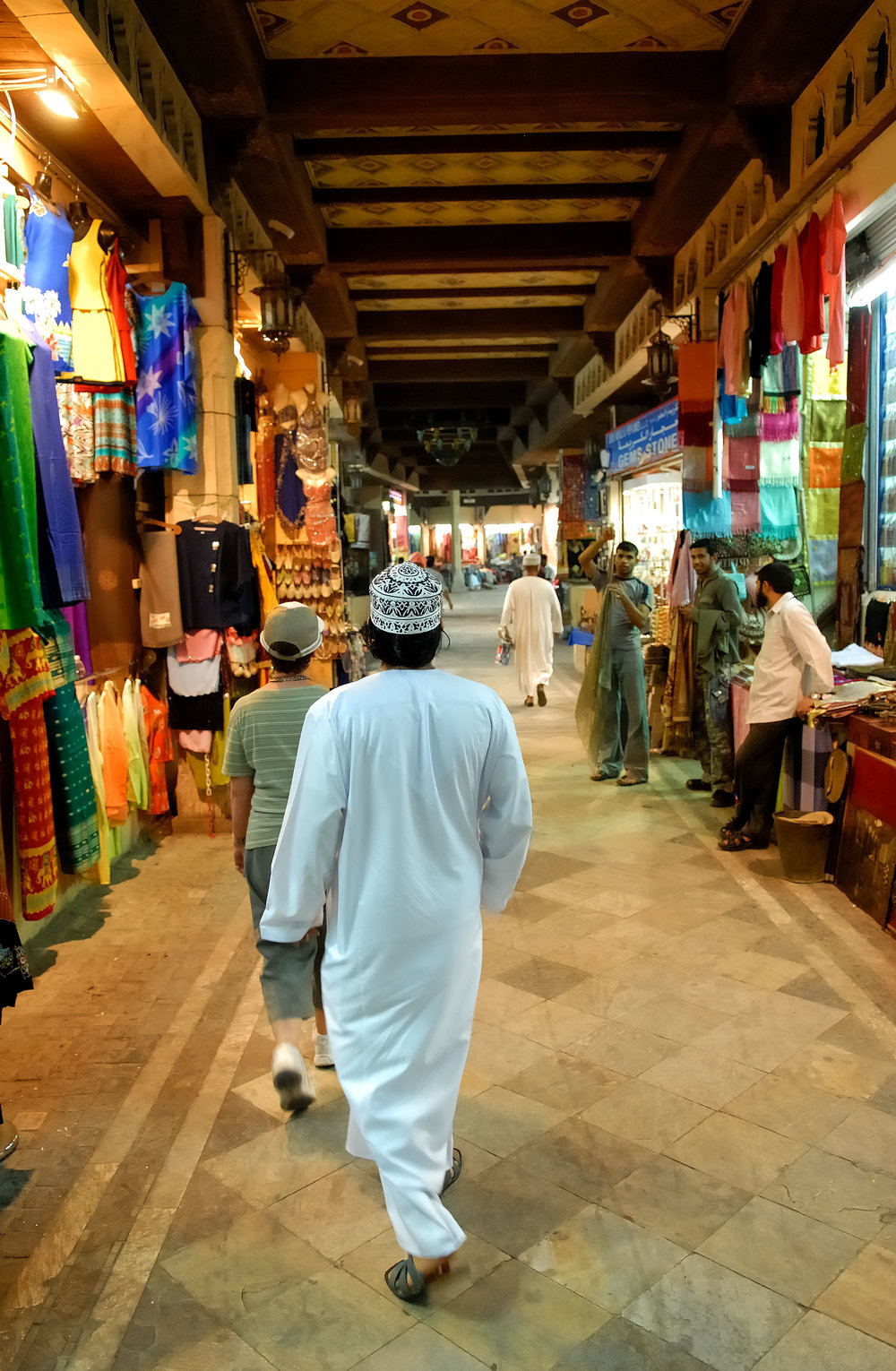
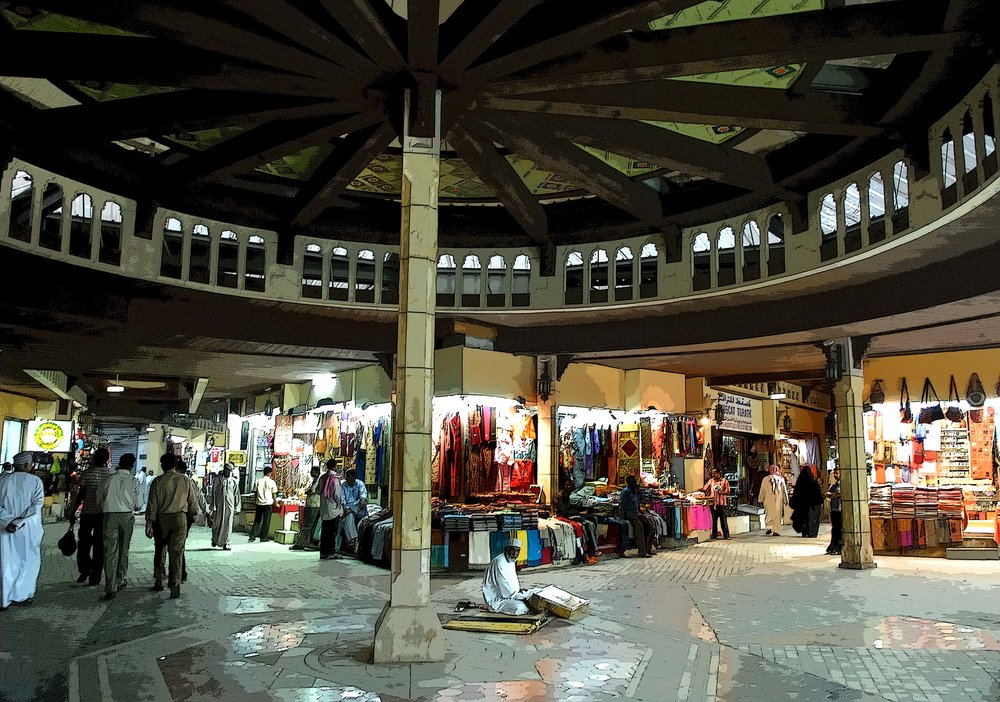
The final photo from the trip is this one of the palaces of the Sultan Qaboos. While it is of exotic design, it is also low rise in accordance with the Sultan’s own ordinances about building heights.
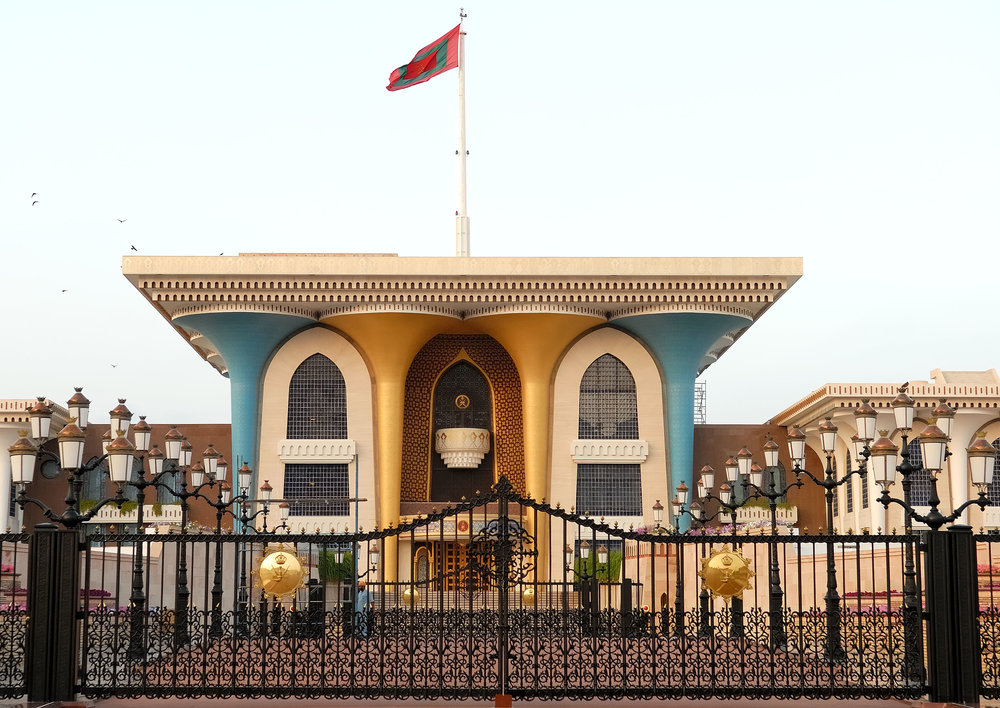
I can certainly recommend Oman as a safe and very friendly country to visit with an interesting culture, quite different to that of other countries in the region, and also with areas of stunning natural beauty and plenty of things to do, particularly for those with a sense of adventure. For photographers, it is a country with something interesting to capture around every corner.
The photos in this article were taken with a Nikon D200 and various Nikkor lenses.
___________
- Subscribe to Macfilos for free updates on articles as they are published
- Want to comment on this article but having problems?

Beaut photo’s, excellent write up.
Thanks for taking the time to share them, William.
Thanks Jason
William
This is national geographic improved with William Lens and sense ,
Thanks Marwan. You taught me a lot about the region. Say hello to all of my old friends in Doha.
William
Very interesting photo essay William. I’m also intrigued by the IRISH etc inscriptions and commenced a search to discover more – but so far have drawn a blank. I still have two Fuji S5 DSLRs which are Fuji modified D200s; one converted to infrared.
Thanks Dunk
I will keep after those ‘Irish’ and ‘Cork’ inscriptions. A friend has passed on queries to an Omani person with Irish connections. Will let you know if anything interesting emerges.
William
The friend of a friend in Oman has come back to say that he does not know where the ‘Irish’ and ‘Cork’ inscriptions came from. He does, however, say that the inscriptions have long since been removed, presumably on the Sultan’s instructions. He also says that this article captures the spirit of Oman well.
William
Fabulous images of a fascinating country. The scenery is quite beautiful and the geology looks very interesting, but the pictures of the people are most interesting to me. A country is it’s people and you’ve captured them quite well.
Thanks Richard. Photographing people in the Middle East, particularly women, has its own set of taboos and one must always be conscious of the concept of ‘haram’ and avoiding it. Generally, if permission is given or if the photography is in a public place with a lot of people around it makes things a bit easier. I am also somewhat wary of the ‘camera club approach’ of photographing a person in a strange costume or an elderly person with lines on their face and presenting this as symbolic of a nation or its culture. Yes, a country is its people, but people in those countries do a lot of things with their lives other than simply waiting around for some tourist to photograph them. It is a delicate balance that needs to be approached with some real feeling for local culture. I could say more but, this is probably not the place to do it.
William
An interesting range of images in terms of subjects, light and perspectives. Thank you for sharing them.
Thanks Wayne. I included a short piece on travel photography planning (for perspectives) when I presented my photos from Syria and Greece to the LHSA in Chicago last year. Today we have Wikipedia, Google Earth, Maps and Street View and Trip Advisor etc. In 2006 I did a bit of research, but nothing had prepared me for the Oman Grand Canyon and the sea rock formations. We were entirely in the hands of our local guides, who were excellent at suggesting things we might like to see. Our answer was always " yes, please".
William
William
All you said is too true. One more important issue to remember in legal terms is:
‘Consent to photography is NOT a consent to publish’.
If you intend to publish the image in any form – print and/or electronic format- you need a specific consent for that.
Afzal
Hi William, I first read this during the afternoon on my phone, but decided to put off adding my ten pence worth until I had time to review the images on my Mac, and look at the finer detail. That was owing to me realising they were shot on the Nikon D200, I have in the background and still use occasionally a D300s, which is a workhorse, but shy on the low light end. Much worse than my beloved Leica X.
I have to say, there is some wonderful colours, and images in this collection. And thank you for sharing this memory laden excursion with us. I only hope you have kept the D200, as I intend to keep my D300s as part of my collection even if it rarely gets a run out.
Cheers
Dave
Thanks David. My D200 has gone now along with a D3 and quite a few Nikon lenses eg ‘Blessed Trinity’ f2.8 zooms etc. I still have 3 Nikon cameras, a D800E, which will be used just for copying my extensive slide collection (I will do an article here on that if the ‘Heath Robinson’ set up works) and a Nikon F and an FM3A as collector’s items, representing the first and last fully manual film SLR cameras made by Nikon. I used Nikon cameras for about 30 years and they were the most consistently reliable cameras that I ever used. Only the D200 gave me an issue with the mount, caused by excessive humidity in Doha, but the local Nikon dealer in Doha fixed it for me for free within a couple of weeks.
The D200 was a lovely camera, easy to use and to handle and it gave lovely colours. I would, however, largely attribute the colours in my photos to the wonderful light in Oman.
William
Sheer visual enjoyment, William, these pictures of buildings, people and landscape. Almost make me feel I don’t need to go there!
Thanks John and Kevin. You will see why Oman was such an obvious choice for a first trip within the region and Muscat was only a few hours flight from Doha.
William
Thank you William this brought back happy memories for me.
Boy what a grand time! Did those hills behind beach have a name, all I can think is Dragon teeth, Tolkien would have loved them. Thank you for the trip.
Thanks John. These would be the coastal foothills of the Al Hajar Mountains, which are also shown in the article. ‘Al Hajar’ means the ‘Stone’ or the ‘Rock’ Mountains.
William
hello william
nice piece captures the country well re ignites my hope to visit sometime. walked briefly into oman from uae at one stage.
rds liam
Go raibh maith agat, Liam. I hope it was not too hot when you were walking into Oman. Was that the ‘Empty Quarter’ you were in or were you on the isolated coastal part of Oman near Musandam? The latter would have been much cooler.
William
We had a great time in Oman, William, a few years ago.
We stayed near to the Al Bustan Palace luxury hotel, but in one of the less formal hotels in that 3-hotel development (‘luxury’, ‘business’ and ‘family’). It was delightful. We ambled around Muscat, and the fish market, souk and art galleries, and just along the waterfront ..and also went on a couple of rides into the interior and to Nizwa fort, etc.
We moved – for, it turned out, just one night – to the super-duper ‘height of chic’ Can’t-remember-its-name Hotel away from the coast and further into town ..but it was just too constrainedly chic, too restrained and formal for us, so we went back to the ‘family-friendly’ resort hotel at the coast!
Muscat is exceptionally clean, people are courteous, you get fined if you don’t wash your car and keep it spotless, there’s jollity and friendliness in the souks, and out in the heart of the country there’s also tribal fierceness, formal-dress daggers and old men with rifles and bandoliers!
It’s a charming place ..and now they’re planning a huge new metropolis and free port further down the coast – high-tech city, docks and dry docks to diversify their income from just oil.
Many thanks for the memories, William!
Thanks David. Oman is a place that is easy to like with friendly people and a distinctive culture. I think that the second hotel you were in was the Chedi, which had been recommended to us by some Qatari colleagues, but only after our travel agent had booked us into another hotel which, I think, was the Grand Hyatt. We stuck with our original booking and we were pleased with that. On our last night, an African American jazz pianist, who was living in the region, was playing in the little open air restaurant at the hotel and I kept him busy with requests for Fats Waller and Louis Armstrong numbers. Close to heaven for me.
William
Yes, the Chedi.
Looked fantastic ..but, in practice, it was silly: only two electricity sockets in an expensive room ..so if you travel with an electric toothbrush, a rechargeable phone, a camera to charge, maybe a video camera, a computer, etc, etc, there was just insufficient provision.
The main dining area – a calm and quiet square ..supposedly – was directly under the flightpath of the Omani Air Force. And the light was too dim to read the menu.
Sun loungers were arranged in rigid rows alongside the pool, and you were told off if you moved them.
Not our idea of a 5***** hotel. We left, and went back to the cheerful one!
It sounds like hotels in Norway where you pay an arm and a leg to get in and then find that you have nowhere to hang your clothes.
William